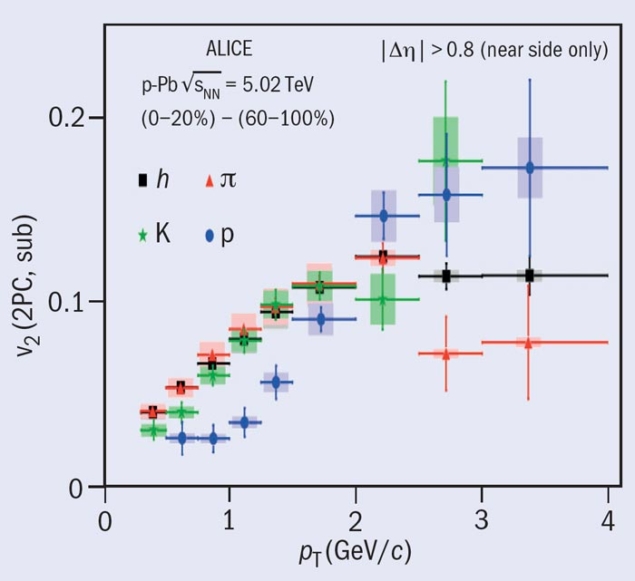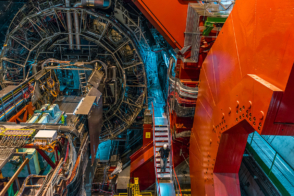
The ALICE collaboration had a significant presence at two recent major conferences, the 2013 European Physical Society Conference on High-Energy Physics (EPSHEP 2013), in Stockholm (EPS-HEP2013: these are good times for physics), and the 14th Topical Conference on Strangeness in Heavy Flavour Production in Heavy-Ion Collisions – Strangeness in Quark Matter 2013 (SQM2013) – that took place on 22–27 July at Birmingham University in the UK.
The many contributed talks and plenary presentations, in particular at SQM2013, highlighted new results from the proton–lead (pPb) data recorded in early 2013. While this run was initially intended to provide control data sets, several unexpected, and currently unexplained, results have been observed.
Presentations also covered updates on both soft (low pT) and hard (high pT and heavy flavour) probes of PbPb collisions
Most intriguingly, both the spectra of identified particles and charged-hadron correlations in high-multiplicity pPb events reveal signals suggestive of collective flow, which are similar to those observed in heavy-ion collisions, as the figure shows. These mass-dependent phenomena do not arise trivially in either the colour glass condensate or in the gluon saturation framework that describes the initial state of the colliding nuclei at the relevant small values of Bjorken-x.
Also in pPb collisions, ALICE’s measurements of minimum-bias spectra for a variety of hadronic species and jets, reveal no strong deviations from the expectations of the scaled number of nucleon–nucleon (binary) collisions. This confirms that the striking suppressions observed so far for all final-state hadrons in lead–lead (PbPb) collisions are a specific feature of quark and/or gluon energy loss via interactions with the quark–gluon plasma (QGP).
Presentations also covered updates on both soft (low pT) and hard (high pT and heavy flavour) probes of PbPb collisions. Higher precision results on nuclear-modification factors and elliptic flow – including measurements on heavy quarks – as a function of the event centrality gave the most detailed picture to date of partonic interactions with the QGP. The measurements of D mesons also indicate that the initial density and temperature of the QGP are so high that the heavy, charm quarks thermalize with the QGP before hadronization. Interestingly, the J/ψ results reveal much less suppression than at Brookhaven’s Relativistic Heavy-Ion Collider, suggesting that significant late-stage regeneration of these quarkonia states occurs as a result of the initial copious production of charm quarks in the heavy-ion collisions at the LHC.
Last, the high-precision soft physics results from the PbPb data underscored the potential significance of a hadronic re-scattering phase at the end of the produced medium’s evolution at the LHC. This phase has not previously been considered important when predicting signatures of the QGP, but it must now be accounted for to model accurately the full dynamics of a heavy-ion collision at the LHC.
There was lively debate at both conferences about the possible interpretations of all of these interesting new results, continuing well after the talks were over. Future studies were proposed that should help to unravel the origin of these intriguing phenomena observed in both pPb and PbPb collisions.





